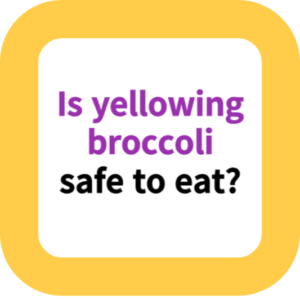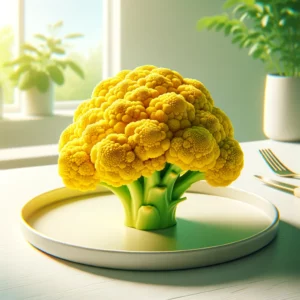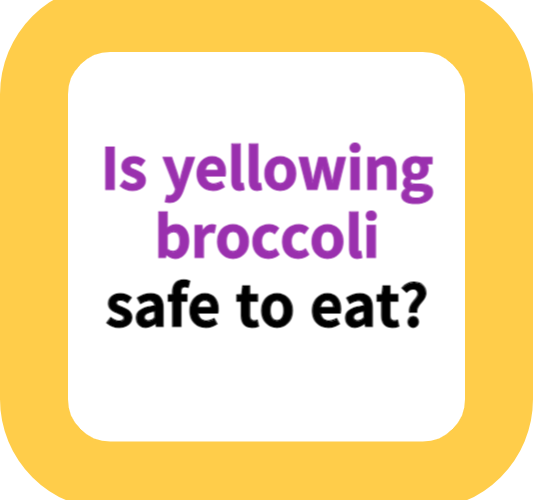Is yellowing broccoli safe to eat?
Welcome to our latest blog post where we delve into the intriguing world of yellowing broccoli! Often encountered in our kitchens, this transformation from vibrant green to a more subdued yellow hue in broccoli raises questions about its safety, nutritional value, and potential culinary uses.
In this comprehensive guide, we explore the natural aging process of broccoli, the factors contributing to its color change, and how to distinguish between harmless yellowing and signs of spoilage.
We also offer creative and delicious ways to cook and incorporate yellowing broccoli into your meals, ensuring you can enjoy this nutritious vegetable to its fullest. Join us as we uncover the mysteries behind broccoli’s color transformation and learn how to make the most of every floret!
Is yellowing broccoli safe to eat?

Introduction: The Phenomenon of Yellowing Broccoli
Broccoli, renowned for its health benefits and rich green hue, sometimes undergoes a noticeable color transformation, turning yellow. This visual change raises concerns about its safety and edibility.
This comprehensive exploration aims to understand why broccoli turns yellow, assess its safety for consumption when this occurs, and offer guidance on how to handle and utilize yellowing broccoli.
Understanding the Aging Process of Broccoli
Broccoli’s journey from a bright green to a yellow color is a natural aspect of its aging process. This phenomenon largely results from the degradation of chlorophyll, the pigment responsible for its green color.
As broccoli ages, chlorophyll breaks down, revealing underlying yellow pigments. It’s important to note that this color change is a natural occurrence and doesn’t always signify that the broccoli has gone bad.
Factors Contributing to Broccoli’s Yellowing
Several factors can accelerate the yellowing of broccoli. These include excessive exposure to sunlight, improper storage temperatures, and the natural progression of the plant’s lifecycle, particularly as it approaches the flowering stage.
Understanding these factors can help in better managing and prolonging the freshness of broccoli.

Evaluating the Safety and Nutritional Value
While yellow broccoli may appear less appealing, it generally remains safe to eat and retains a significant portion of its nutritional value. This includes essential vitamins and minerals beneficial to health.
The key is to distinguish between natural yellowing and signs of spoilage, such as a slimy texture, an off-odor, or the presence of mold.
Discerning Between Natural Changes and Spoilage
Assessing the overall quality of broccoli is crucial. While natural yellowing is typically harmless, other indicators like a mushy texture, unpleasant smell, or visible mold suggest spoilage. In such instances, it’s safer to discard the broccoli to avoid potential health risks.
Cooking and Utilizing Yellowing Broccoli
Yellowing broccoli can still be a delicious and nutritious part of a meal. Cooking methods like steaming, sautéing, or incorporating it into dishes like casseroles or soups can enhance its flavor and make it more palatable. These methods can also help in retaining the remaining nutrients.
Conclusion: Embracing and Utilizing Yellowing Broccoli
In conclusion, broccoli that has turned yellow can still be a valuable addition to your diet, provided it shows no signs of spoilage. Understanding the natural aging process of broccoli and employing proper storage techniques can help maintain its quality.
Yellowing broccoli, when cooked appropriately, can continue to provide nutritional benefits and be part of enjoyable meals, demonstrating the importance of reducing food waste and embracing the natural lifecycle of vegetables.
